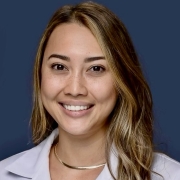People Profile – Dr. Clark Restrepo

Clark Restrepo, MD, PGY 4; Interventional Radiology
As a medical student at Georgetown University, Clark Restrepo, MD, (PGY 4; Interventional Radiology) knew that MedStar Health’s residency program would offer him the wide breadth of clinical experience he was looking for. He also knew that, with the guidance and mentorship of the amazing faculty at MedStar Georgetown University Hospital and MedStar Washington Hospital Center, his training would help him become a skilled and compassionate physician.
Now in his fourth year of residency, Dr. Restrepo has come to realize just how much of his success has been driven by not only those mentors, but everyone he interacts with each day.
“I greatly appreciate the support of the technologists, nurses, and staff who help manage the care of so many patients in the radiology department on a daily basis,” he says. As a new class of interns, residents, and fellows joins MedStar Health GME, Dr. Restrepo recommends they take this to heart.
“Make an effort to get to know the people you are working with. At a minimum, take the time to introduce yourself to all members of your patients’ team—whether that’s the case manager on the floor or the front desk clerk in the clinic. Everyone plays an important role in the daily care of our patients and should be recognized and appreciated.”
On a personal note, Dr. Restrepo also recommends that all trainees—not just those in radiology—take time to examine their patients’ imaging. “It will help you become a more well-rounded physician and give you a better appreciation of your patients’ disease process,” he explains. Dr. Restrepo has seen this firsthand as physicians of all specialties look to interventional radiologists for guidance, often during the direst times in a patient’s clinical course.
Being able to participate in the multi-disciplinary care of every patient in the hospital—from the pediatric patient who has just had an organ transplant to the new mother in the immediate post-partum period—is his favorite part of interventional radiology.
Dr. Restrepo acknowledges, however, that this aspect of his specialty can be exhausting as you are pulled in multiple different directions. To keep his energy up, he makes sure to reflect on his daily experiences and remember the moments of appreciation from the patients, which he says give him the greatest job satisfaction and make him excited to return each morning.
To help others on his team who may be struggling, he looks for ways to maximize his involvement and tries to be available to help his colleagues in any way he can. “The goal is for everyone to finish their clinical responsibilities and be able to spend time with friends and family or enjoy personal hobbies,” he says.
Dr. Restrepo’s own hobbies include spending time outside, especially hiking the national parks near Washington, D.C., or golfing with friends and other residents. He likes trying new restaurants, even if it means driving 45 minutes outside the city for a more authentic experience. And, growing up in Chester Springs, Pennsylvania, outside of Philadelphia, Dr. Restrepo makes sure to keep up with his favorite teams, saying he cannot emphasize enough his passion for Philly sports: “GO BIRDS!”







